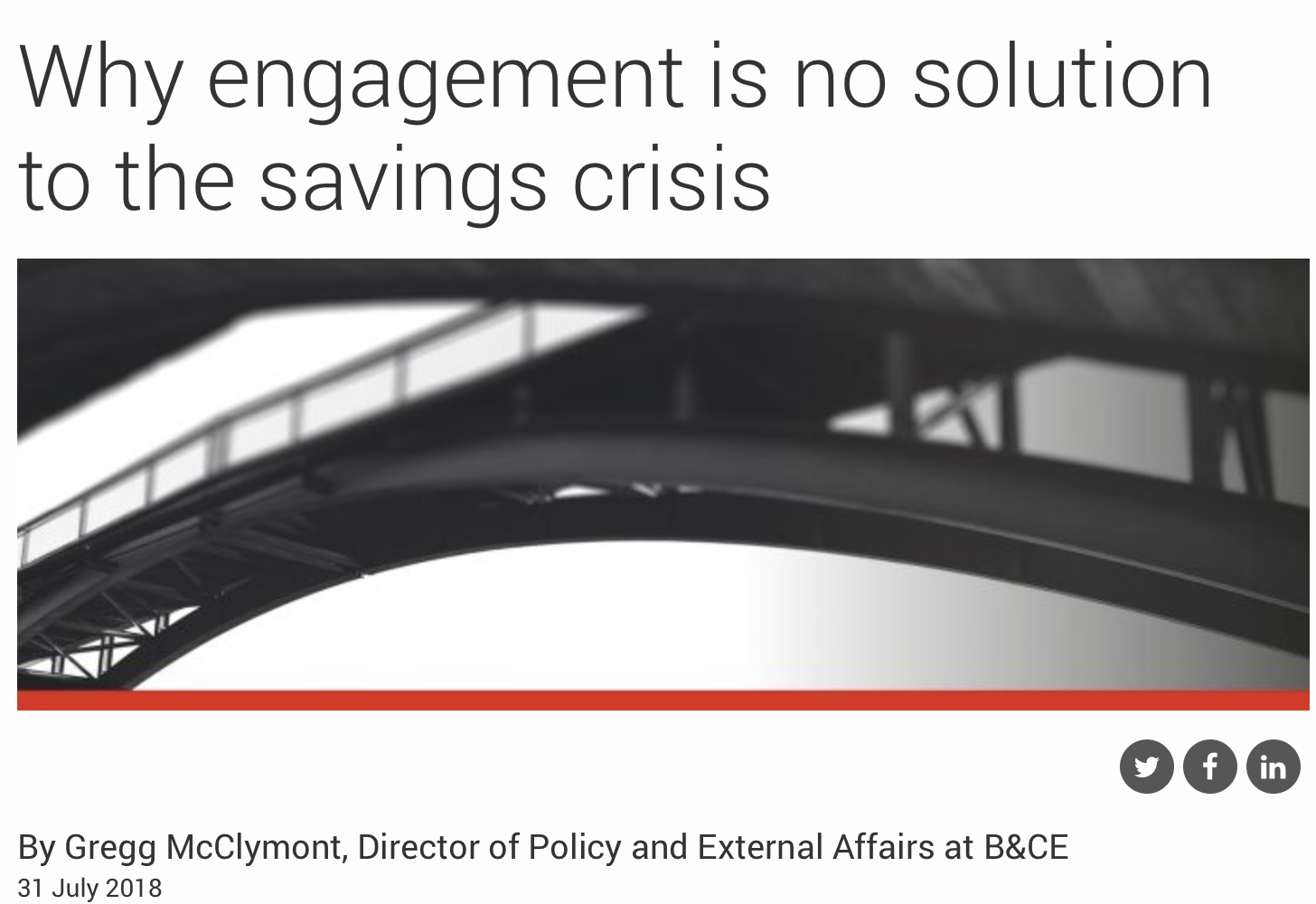
‘Engagement’ is no solution to the savings criris? Really? Are savings then totally unlike any other consumption good that sells itself on expected satisfaction or gratification? Aren’t savings just satisfaction with a bit of time shift?
Well, it was after all an article on the ICAS website, a professional body for accountants. But the author is Gregg McClymont, Director of Policy and External Affairs at B&CE, the people behind The People’s Pension, an auto-enrolment work-place pension scheme. And he is promoting his talking slot at a forthcoming Big Pension Debate that promises ‘challenging conversations’. But I think he really means it.
I’m grateful to the Pension Plowman, blogger Henry Tapper, for drawing this to my attention even though I couldn’t agree less. Henry is a big fan of paternalist institutions, such as we used to have in the shape of final salary pension schemes and life assurance companies. He is mistrustful of personal financial capability and so sees individuals as vulnerable to the exploitation of information advantage by financial agents. I agree. It was a prompting for my book, No Monkey Business. But that also argued that it was our paternalist traditions that were partly to blame. They encouraged blind dependency and passivity instead of active engagement. It allowed agents to hijack the language of personal aspiration and satisfaction, a language controlled by individuals, and replace it with a language that is exclusive to an elite of knowledgeable professionals and unusually financially-literate clients. The sort of people who know what ‘caveat emptor’ means.
I think lingering paternalism is why some people think engagement cannot be relied on. They haven’t quite got what engagement implies. It’s not just translation or dumbing down.
Spending is the point of saving. Saving is just shifting when you spend. Saving can also put money to work to generate its own ’employment earnings’ to be turned into spending – another concept that helps characterise investment risk. Even housing equity represents a stock of capital that substitutes for spending, if only on rent. Saving and investing competes with spending only in the sense that spending tomorrow competes with spending today. And the enjoyment of property competes with the enjoyment of any spending it replaces. Surely spending is exactly what people do engage with. They can relate to different spending outcomes and they can relate to the personal consequences of those differences. In fact, they alone can.
Curious, then, that the savings industry thinks that spending should not be the main focus of its communication. But that’s because it can’t – unless it can bring all resources together in one place and then express them as potential spending. A single pension provider can’t do more than project the gross income provided by that one pot. Even if information about all pensions was brought together in one place (the dashboard idea), it still wouldn’t deal with other resources available to meet spending. And it can’t convert gross cash flows into after-tax spending power. Neither can it present the options for spending in a shape that suits the individual, such as because they have time preferences for total spending, because savings have to complement declining employment earnings for several years or fill a gap before state or final-salary pensions start paying.That’s the flexibility that Pension Freedoms were designed to address.
Supposing you could aggregate (physically, or as data) all the resources and translate them into probable spending outcomes and possible options? Would that fundamentally alter the language of the individual’s interaction with the savings industry? Would that in turn transform the level of engagement by savers? We think it would. We’ve been doing just that for over ten years now. It seems to work well, in spite of all our shortcomings in almost every department of business development. We can imagine what better people could do.
One of the most transformative aspects of goal-based planning, focused on spending outcomes and options, is that the outputs of an engine that can calculate these can be used to reveal directly the risk choices that only an individual can make. If you know your resources and you know your required spending and how much additional scope for spending or gifting you value, you can solve for how much risk to take and why. What you value at the margin may not be your own spending so much as gifting. Not necessarily now but in the future, so making your children or grandchildren partners in your risk taking, with your own preferences dictating how gets what interests in the payoffs. If you want to take less risk, you will know the price of that in lower spending potential or greater resources required. If you are on target to meet your objectives, you know when and by how much to reduce risk. Suddenly, risk is no longer an abstract. Spending is what makes it concrete. And it is a dynamic process of constant replanning.
This of course is not about making recommendations so much as informing self selection. That is the other transformation that comes from a holistic, probabilistic approach to planned spending. In our experience, this is not just more engaging. It is actually empowering. People who were once unwilling to take personal responsibility, and so made themselves more vulnerable than they wanted to be, are now in control. At least, at a high level they are in control. And that’s all that matters. They are perfectly happy then to delegate the implementation of the goal plan through investments and wrappers and all the other jargon they dislike.
The technical engines (probabilistic return-generating machines, portfolio optimisers, tax optimisers and so on) and the implementation vehicles (risk free investment hedges, risky investments, wrappers, custodians) are necessary conditions of this new conversation. But they are not sufficient without marketing. This is above all a marketing vision.